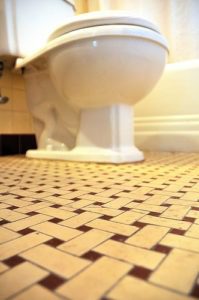Suppose the drainage system in your property is situated at a lower level than the septic tank. An ejector pump is essential to transport the wastewater to the septic tank. Septic systems can present increased intricacy in such cases.
Conventional systems rely on the natural force of gravity to facilitate waste movement. The waste exits the tank and flows through a pipe with a gentle downward inclination, allowing it to reach the leach field.
The raised mound system is required when the local soil is unsuitable for a conventional gravity-fed leach field. This involves removing the topsoil and constructing the drain field on the existing soil. The field is elevated above the septic tank, necessitating a pump transporting the wastewater from the tank to the field.
But there’s more to know about septic pump replacement.
Difference between septic ejector and effluent pumps
Sewage pumps are essential in residential basements, notes Pinnacle, a leading property management company, in order to elevate untreated sewage to the pipe connected to the septic tank. These pumps are specifically designed to handle solid waste and possess increased durability, albeit at a slightly higher cost.
In contrast, effluent pumps are employed in outdoor systems. A pump is unnecessary if you have a standard leach field where the effluent naturally flows downwards due to gravity. Effluent pumps are specifically used in engineered mound systems where the leach field, also referred to as the drain field, is positioned at a higher elevation than the septic tank.
In such scenarios, the liquid from the tank requires pumping up to reach the field. Typically, the effluent flows from the septic tank into a designated tank that houses the submerged pump, often called a dosing chamber. From there, the pump transports the effluent upward and releases it into the field.
Replacing the pump
Only the pump unit itself requires replacement when it comes to replacing effluent pumps. However, some homeowners opt to change the entire pump kit if the whole system is aging and displaying signs of failure. This includes the pump, high-water sensor, switch, and alarm panel.
Both types of pumps typically require replacement after 7-12 years, depending on their initial quality and usage level.
During the process for either type of pump, power to the pump is shut off, and the pump is removed from its reservoir. The disconnected wiring and the conducted inspection can determine the cause of the failure and assess if repair is possible.
In many cases, replacement is the most prudent choice, especially if the pump is older and considering the cost of parts and labor required for repair.
Afterward, the process is reversed. The newly installed or repaired pump is wired, repositioned back into the tank, and if any exit pipe connecting to the tank or field was disconnected, it is reconnected. Power is reinstated, and the system is tested to ensure its proper functionality.
Cost factors
Some people who want to save money are willing to tackle a messy task and can likely handle the replacement themselves. Depending on the cost of the pump, the savings from a DIY typically range from 15% to 50% of the total job cost.
If you call a professional’s services to replace an effluent pump, they may want to pump both the main septic tank and the pump chamber during the inspection. Aside from normal wear and tear, this is done to uncover any potential causes for the pump failure.
Variables that impact the septic pump replacement cost:
- Quality – the quality of the pump, rather than its size, is the primary cost factor. High-quality cast iron pumps tend to be twice as expensive as midrange options.
- Size – Septic pumps come in various sizes, ranging from 1/3 to 1 1/2 horsepower, with 1/2 and 3/4 horsepower being the most common. It is important for the new pump to match the system design provided by the engineer, including the required flow rate measured in gallons per hour (GPH). It is not advisable to opt for an undersized pump in order to save a few bucks.
- Housing material – within a brand, pumps with cast iron housing are significantly more expensive than those with thermoplastic bodies. Thermoplastic housing offers the advantage of corrosion resistance, which may be beneficial if you have a water softener that utilizes salt.
- Voltage – pumps are manufactured to function at either 120V or 230V. The price of 230V pumps is slightly higher. However, if there is a need to replace the breaker as well, the cost for a 230V system can significantly increase.
- Cord length – pump cords are available in lengths ranging from 10 to 50 feet, although most commonly, they are 20 or 25 feet long. The impact on cost is minor.
Location – as with any home improvement or repair project, the local cost of living affects the price. Costs tend to be higher in coastal areas, and the country’s central regions tend to have average costs. Small towns and rural areas generally offer more affordable prices due to a lower cost of living.
Featured Image by Pexels.com




